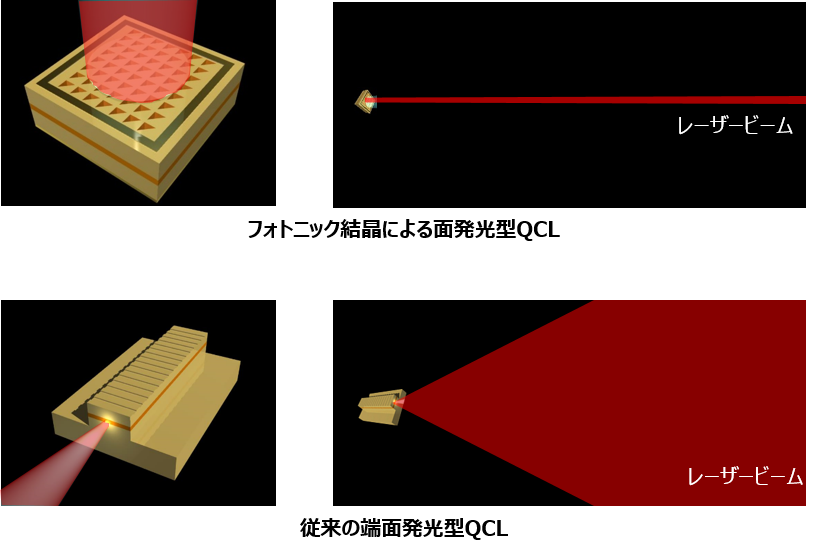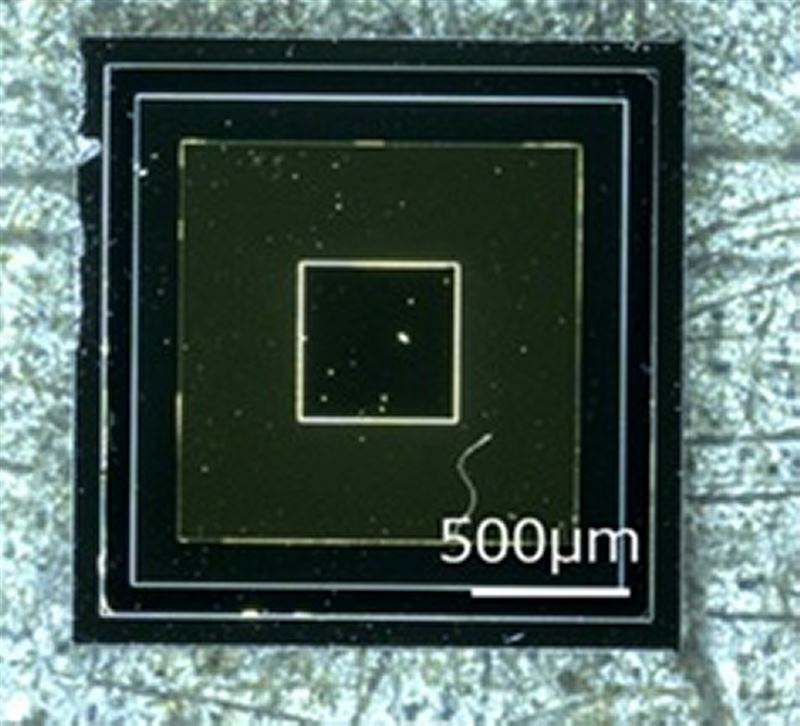



Toshiba: Developed surface-emitting quantum laser: CO2 emissions
-Measure with high sensitivity at a wavelength of 4 μm-
Toshiba:
CO2 emissions from power plants and factories,
Wavelength 4 micrometers to measure with high sensitivity,
We have developed a surface emitting quantum cascade laser (QCL).
Realization of carbon neutrality:
Not only calculation by emission factor
Grasp the actual CO2,
Needs are increasing.
Assuming applications for detecting gas leaks in piping, we aim to put it into practical use within three years.
Toshiba’s surface emitting QCL:
It can output in the mid-infrared wavelength range of 4 micrometers.
“Development of a surface emitting QCL with a wavelength of 4 micrometers” is the first in the world.
Laser light,
CO2, carbon monoxide, etc.
Absorbed by gas molecules
Gas detection and concentration can be measured from the amount of attenuation of the reflected light.
New switch
Detected by surface emitting quantum laser: Visualizes invisible gas
-What is ultra-micro technology that contributes to solving social issues?-
wrap up:
Toshiba uses semiconductor lasers to detect invisible gas remotely with high sensitivity
Realize “atomic level” process by integrating semiconductor and laser technology!
Hone technology through innovation and aim for early social implementation
Toshiba
Swiss Institute of TechnologyWe have developed a technology to detect gas with a surface-emitting quantum laser.
this is,
Specific gas remotely,
And detect in real time,
The gas itself can be visualized by using an infrared camera together.Toshiba semiconductor laser:
The semiconductor laser that Toshiba is working on is a surface-emitting Quantum Cascade Laser (QCL).
Collaborate with the Swiss Institute of Technology, which has produced a large number of Nobel laureates.
What is a surface emitting quantum laser?
A device that emits light by oscillating a laser by passing an electric current through a semiconductor.
The gas sensing mechanism that utilizes it is extremely simple.
Gas sensing mechanism:
The laser light is absorbed by the gas.
When light enters the space where gas exists
If you measure the change after leaving the space,
Gas can be detected and concentration can be measured.
Quantum Cascade Laser: QCLThe QCL can oscillate light in the wavelength range of 3 μm to 13 μm.
By matching the wavelength
Pinpoint various gases
The advantage is that it can be detected with high sensitivity.
This wavelength range cannot be obtained with other semiconductor lasers.Target gas:
Industrial plant
For methane and nitrogen oxides (NOx).Sulfur hexafluoride (SF₆) is detected in the case of gas leak.
Greenhouse gas control:
Helps control greenhouse gases.
CO₂ detection and
Exhaust gas monitoring,
In addition, sarin in public facilities, etc.
It is also useful for detecting toxic gas.Convenient to carry:
Since the QCL is a semiconductor laser, it is small.
It is also an advantage to be able to carry the equipment.
You can irradiate the area of concern with a laser.
Offensive odor detection:Plumbing and ducts in high places,
Gas leaks on production lines that cannot be approached,
Expectations are rising for the detection of offensive odors.Surface emitting quantum cascade laser:
It is an advanced sensing technology that detects and visualizes invisible things.
Crystal growth at the atomic level,
Exquisite lithography,
It was born by making full use of dry etching technology.Toshiba Clip